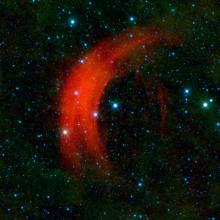Listen to today's episode of StarDate on the web the same day it airs in high-quality streaming audio without any extra ads or announcements. Choose a $8 one-month pass, or listen every day for a year for just $30.
You are here
Big Changes
The asteroid that wiped out the dinosaurs was like a cosmic reset button. It killed off most of the life on Earth, which made it possible for modern life to take control.
The asteroid was a few miles in diameter. It hit off the coast of Mexico 66 million years ago. It caused a massive tsunami, plus a firestorm that blacked out the Sun and created acid rains across the entire planet. About three-quarters of all the plant and animal species died off — in both land and sea.
On land, dinosaurs and other big animals died off quickly. That let small mammals begin to dominate the landscape.
A couple of recent studies have found other changes that followed the mass extinction. One study says it destroyed almost half the vegetation in the Amazon rainforest. It took millions of years to redevelop. Trees with thin canopies, which allow dense vegetation to grow at the surface, were replaced by flowering trees with much thicker canopies. That transformed the rainforest’s appearance.
A study in September said that snakes profited from the changes as well. Many of them were able to remain underground, without food, for up to a year at a time. As conditions improved, they returned to the surface. With most life eradicated, there was less competition for limited food supplies. So snakes multiplied, evolved, and spread out across the planet — beneficiaries of a global catastrophe.
Tomorrow: Looking into the details of a tiny companion.
Script by Damond Benningfield






